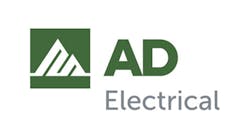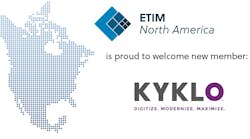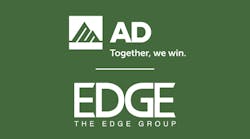More than 75 years after its discovery, superconductivity has finally crossed the charts from physics jargon to commercial viability.
The United States Department of Energy (DOE) implemented the Superconductivity Partnership Initiative (SPI) in 1988 to accelerate development of superconductor technology through support of collaborative projects between U.S. national laboratories and industry. The Partnership teams have produced motors, current controllers, transformers, generators and power cables, all of which have set world performance records.
In SPI's current round of awards, Pirelli Cable Corp., Lexington, S.C., made the final cut with its proposal to demonstrate a three-phase system, about 390 ft in length, for continuous operation, including terminations and cryogenics. Pirelli's team includes American Superconductor Corporation, Westborough, Mass.; Detroit Edison, Detroit, Mich.; the Electric Power Research Institute, Palo Alto, Calif.; and Lotepro, Valhalla, N.Y. The Partnership contract with the DOE is scheduled to be signed on Oct. 21, 1998 at the Detroit Edison plant. When completed, the cable system will be installed in an existing network of Detroit Edison. Pirelli's previous SPI project resulted in a world-leading, flexible, high-temperature superconductor (HTS)* cable, 162-1/2 ft. in length, that was tested at 3,300A DC.
A proposal by Southwire Co., Carrollton, Ga., was also approved, and the DOE contract was signed on June 29. The company intends to develop, install and test a 100-ft, three-phase, HTS cable protype that could someday power a small city. Southwire's partners include Intermagnetics General Corp., Latham, N.Y.; Midwest Superconductivity, Inc., Lawrence, Kan.; Southern Company Services, Birmingham, Ala.; Georgia Transmission Systems, Tucker, Ga., Southern California Edison, Rosemead, Calif.; Oak Ridge National Laboratory, a division of Lockheed Martin Corporation, Bethesda, Md.; and Argonne National Laboratory, Argonne, Ill.
HTS cable wire research at American Superconductor and Pirelli has focused on two commercial cable applications: retrofit cable that can be drawn into existing conduits as worn-out cables are removed and coaxial cable intended primarily for new underground installations. The increased ampacity and reduced power losses of HTS cables are expected to provide a low cost method of expanding power capacity by two to five times in utilities' existing rights-of-way. (A right-of-way is the land that utilities use for their long-distance runs of gas pipes, power lines, telephone lines, etc. across property others own).
Former Energy Secretary Federico Pesa says the annual world market for superconducting technology is estimated to be at least $30 billion by the year 2020. When they add their estimates for the potential related services, industry experts believe the entire market for superconductor products and services will reach or exceed $122 billion in that time frame.
*Superconductivity, the ability of certain materials to conduct electrical current with no resistance and extremely low power losses, isn't a new phenomenon. Low-temperature superconductivity (LTS) was discovered in 1911. The problem has always been the logistics and cost of cooling the conductive material down to the point that it becomes a "super" conductor. Until recently, that point was about 23 Kelvin (K), or 418 degrees below zero on the Fahrenheit scale. Typically, liquid helium was used to accomplish this chilling feat, and it was costly stuff--about $10 for a 2-liter bottle.
The commercial viability of superconductors became a possibility in1986 when IBM researchers discovered a material that would superconduct at 34 K. (-398.2 degrees F.), 11 degrees C. warmer than any material previously tested. By March 1987, eight new materials had been developed that would superconduct above 77 degrees K., the temperature of liquid nitrogen. "High temperature" superconductors were born. This was breakthrough technology because liquid nitrogen is cheap--about 25 cents for a two-liter bottle--and easier to handle than liquid helium. Commercial applications were now economically feasible, and government and privately funded research blossomed.








